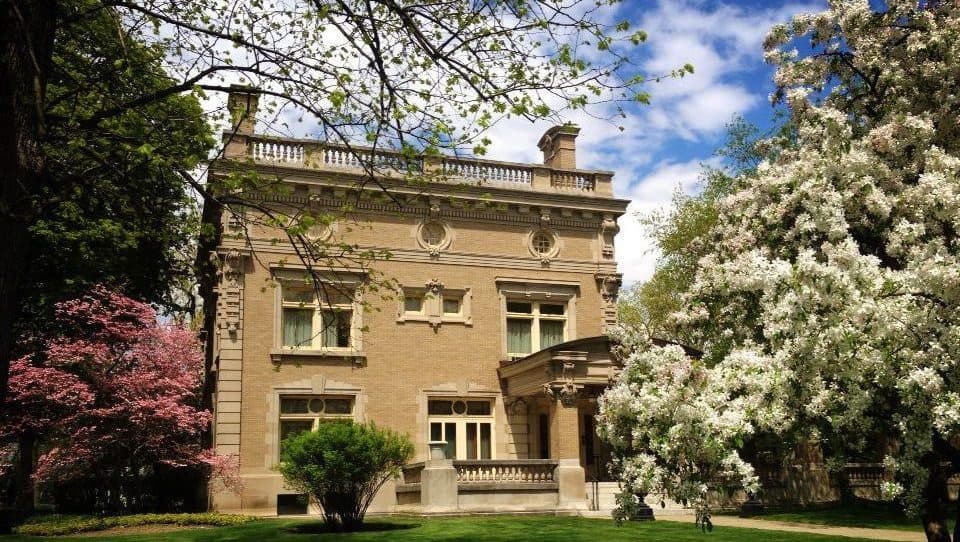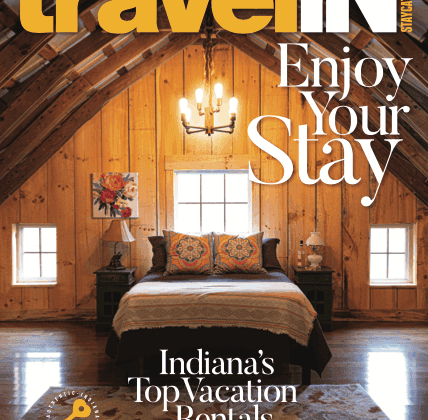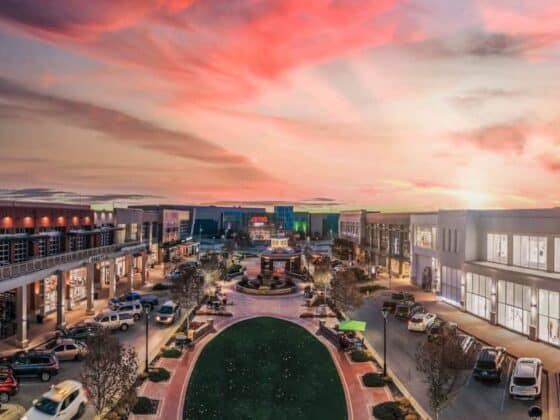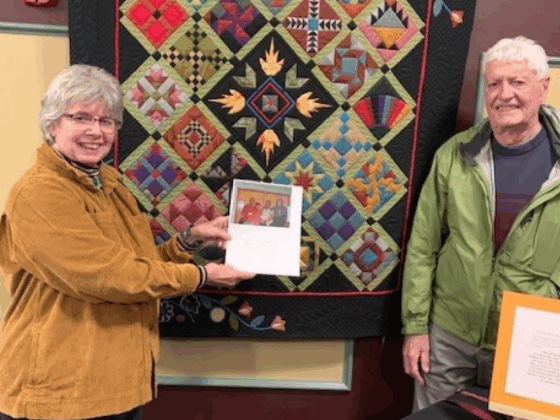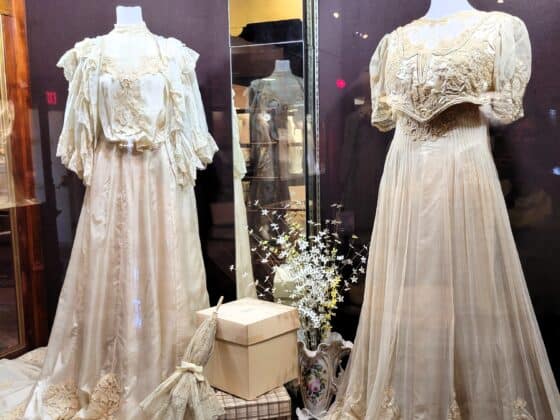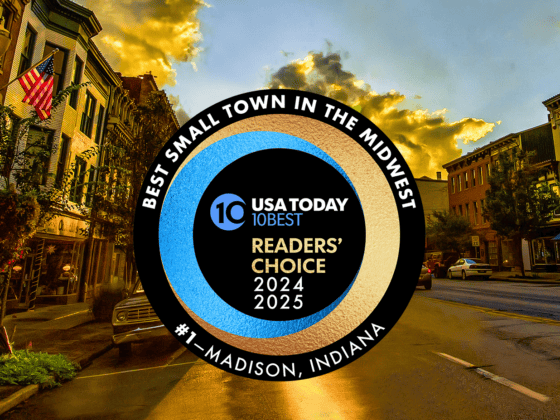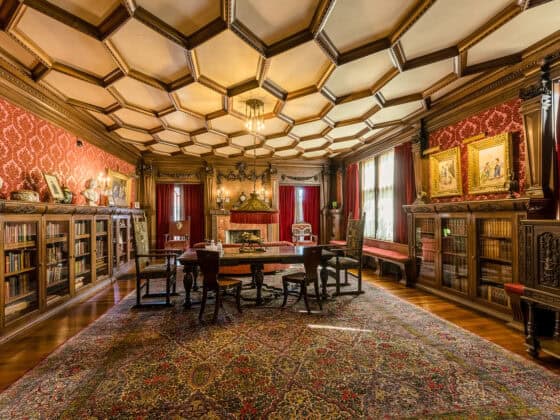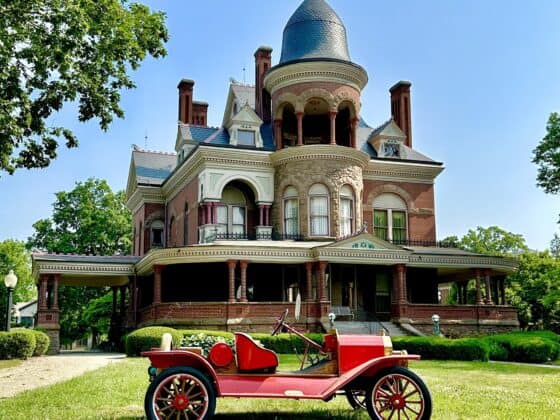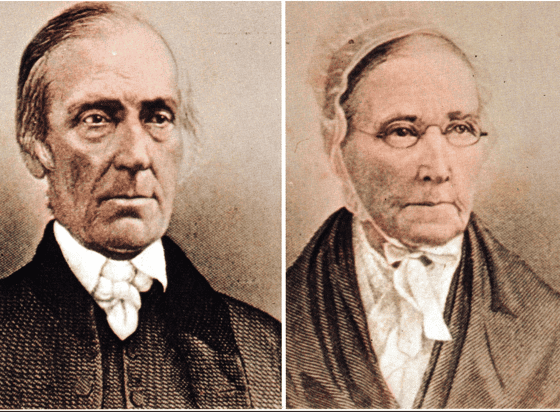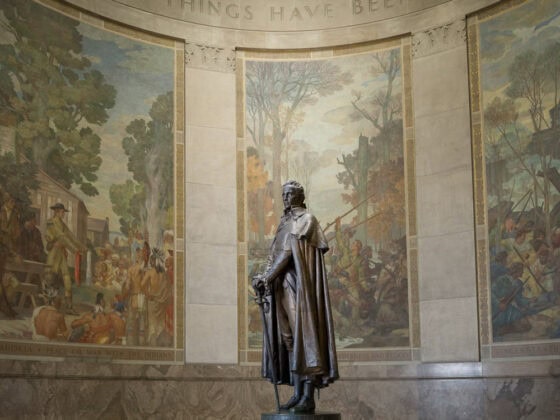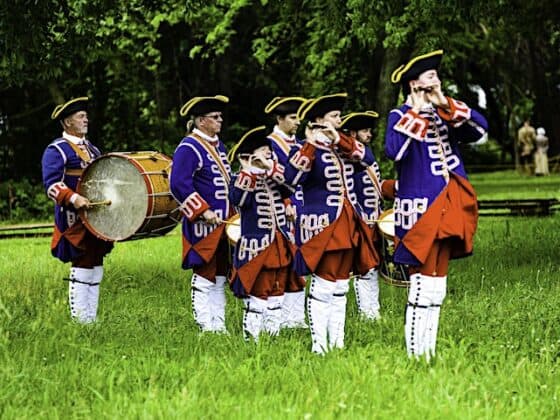Magnificent Hoosier Mansions
Story by Julie Campbell
Believe it or not, time travel is possible in Indiana. From Madison to Fort Wayne and Kokomo to Muncie, magnificent mansions across the Hoosier state transport thousands of visitors each year to the 19th century, giving glimpses into the lives of the rich and famous who once occupied these palatial dwellings.
Southern Indiana
Travel the winding roads of southern Indiana to the idyllic river town of Madison, and you’ll find the city’s crown jewel, The Lanier Mansion, tucked away on a quiet side street. Overlooking the banks of the Ohio River, the Greek Revival-style mansion was built by Madison lawyer, banker, and railroad magnate James Lanier.
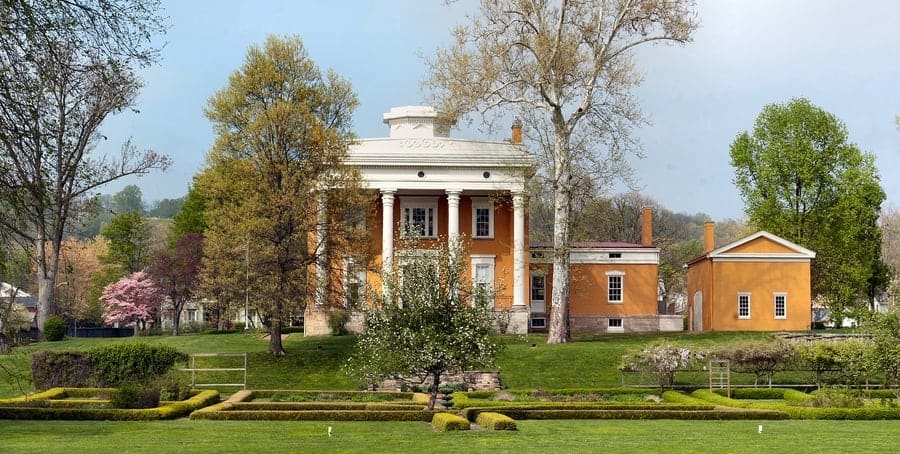
An impressive three-story spiral staircase, Ionic columns, stunning trim and moldings, and formal gardens pull visitors through the time portal to another era. The mansion is open year-round from Wednesday through Sunday, except for certain holidays.
About an hour from Madison on New Albany’s Main Street, the breathtaking Culbertson Mansion greets passersby with its stately Second Empire architecture. Guided tours of the 20,000 square foot home last around one hour and include all four floors, showcasing its awe-inspiring painted ceilings, carved staircase and elaborate plasterwork. Built in 1867 by William Culbertson, who was once considered the wealthiest man in Indiana, the Culbertson Mansion cost around $120,000 to build ($2 million in today’s economy). Both Culbertson and Lanier mansions are Indiana State Museum Historic Sites. Tours are offered Wednesday through Sunday. For more information, go to www. indianamuseum.org/historic-sites/.

Once upon a time, Vincennes, Indiana was home to William Henry Harrison, the ninth president of the United States. Grouseland, an elegant Georgian/Federal-style house built in 1804, was home to Harrison and his family while he was the governor of the Indiana territory from 1800-1812. Much more than a residence, the house served as the center for government of the Indiana territory as well as a fortress in times of unrest. Grouseland is currently closed due to the pandemic and restoration on the site. Please call the Vincennes/Knox County Visitor’s Bureau at 812-886-0400 to arrange a scheduled tour.

Central Indiana
Less than an hour’s drive from Indianapolis, Lane Place Antebellum Mansion showcases beautiful Greek Revival architecture reminiscent of the antebellum estates of the South. The home’s owner, Henry S. Lane, who was a U.S. congressman, senator and close friend of Abraham Lincoln, bought the four-acre site along with a three-room cottage in 1844 and married Joanna Elston the next year.
“The Lanes lived in the cottage while the west wing of four rooms
and central hall were added,” said Jill Coates-Matthews, executive director of the Montgomery County Historical Society at Lane Place. “Lane Place is a wonderful example of Victorian life— much of the home feels as if the Lanes had just stepped away for a moment.”
The home is closed for the winter season and will reopen for scheduled tours in March. Visitors are asked to call ahead for tours and check the website for more information: www. lane-mchs.org.

Further up north in Muncie, the Lucius L. Ball Home sits on Minnetrista Boulevard—a National Historic District—alongside four other historic Ball (of Ball Jar fame) family homes (Mary Lincoln Cottage, Oakhurst, Maplewood, and Nebosham, the E.B. and Bertha C. Ball Center). While the house has changed looks and ownership many times since its construction in 1874, it was eventually gifted by the Ball Foundation to Minnetrista in 1994.
Part of the Ball mansion’s legacy was its use for several decades as the local PBS TV studio, in which iconic painter Bob Ross filmed his television series “The Joy of Painting” from 1983-1988. In October 2020 the first floor of the home was reopened as the “Bob Ross Experience”—an immersive history exhibit exploring the story and message of Bob Ross, WIPB-TV, and “The Joy
of Painting.”

“I would have to say that the recreated Bob Ross studio is my favorite space in the home,” said Katy Maggart, communications manager at Minnetrista. “It has such a power of place. When you stand in there you know that Bob stood there as well. It’s something that makes this home very unique.”
Timed tickets are available for the Bob Ross Experience, and the L.L. Ball home is currently capped at 15 people per timeslot. The exhibit is open Wednesday through Sunday. Ticketing information can be found here: www.minnetrista. net/tickets-tours

The historic district of Kokomo is home to one of the most impressive examples of a unique combination of Queen Anne and Romanesque Revival architectural style dwellings in the country. Built by industrialist Monroe Seiberling during the gas boom era of the late 19th century, Seiberling Mansion features a lovely wrap- around porch and a stunning three- story tower topped by an acorn-shaped roof. Hours are Tuesday through Sunday, 1 to 4 p.m., February through December. The mansion is closed in January for maintenance. Please call (765) 452-4314 before visiting.
Northern Indiana
Brookside Mansion on the University of Saint Francis campus in Fort Wayne was originally the residence for industrialist John Henry Bass. The handcarved sandstone mansion, which was rebuilt after a gas explosion in 1902, was purchased by the Sisters of St. Francis of Perpetual Adoration along with surrounding land in 1944 to house the then-Saint Francis College.

“Brookside now houses university administration offices, alumni office and fundraising offices,” said Reggie Hayes, director of external communications for the university. “The interior retains its historical décor, including a ballroom, and is available for private events. At the start of the Christmas season, it is home to ‘Christmas in the Castle,’ with rooms and Christmas trees decorated by local artists and organizations for public tours.” Due to COVID-19, the event was canceled for 2020, and year- round tours of the building are on hold due to the pandemic. Check www.sf.edu for updates and news of reopening.

In Elkhart, visitors to the Ruthmere Mansion campus will get to tour two historic homes—the Ruthmere Mansion and the Havilah Beardsley House.
The Ruthmere, a 13,000-square- foot Beaux-Arts mansion, is the most prominent historic residence in Elkhart and was constructed between 1908-1910 by Albert R. and Elizabeth Baldwin Beardsley. Albert was general manager of the Dr. Miles Medical Company, which later became Miles Laboratories, which manufactured brand names like Alka-Seltzer and One-a-Day Vitamins.
The 1848 Havilah Beardsley House was the first brick home built in Elkhart. Its owner, Dr. Havilah Beardsley, was known as “the Father of Elkhart” and purchased a large tract of land that included much of what’s downtown Elkhart today. The home is a two-story Italianate-style building with fluted columns, rounded openings, and decorative brackets. www.ruthmere.org
Built in 1857 by John Barker Sr. and remodeled in the early 1900s, the Barker Mansion, in Michigan City, stands as a testament to the success and innovation of the Barker family and a prime example of luxury in the Gilded Age. Through their industrial enterprises, the Barker Family helped define the Midwest as a center of trade and commerce. Their home set the tone for opulence and culture during the Gilded Age by honoring the grace and beauty of the past while calling upon the brilliance of progressive architecture and design. The Barker Mansion opened as Museum and Civic Center in 1970 and was placed on the National Register of Historic Places in 1975. www. barkermansion.com


